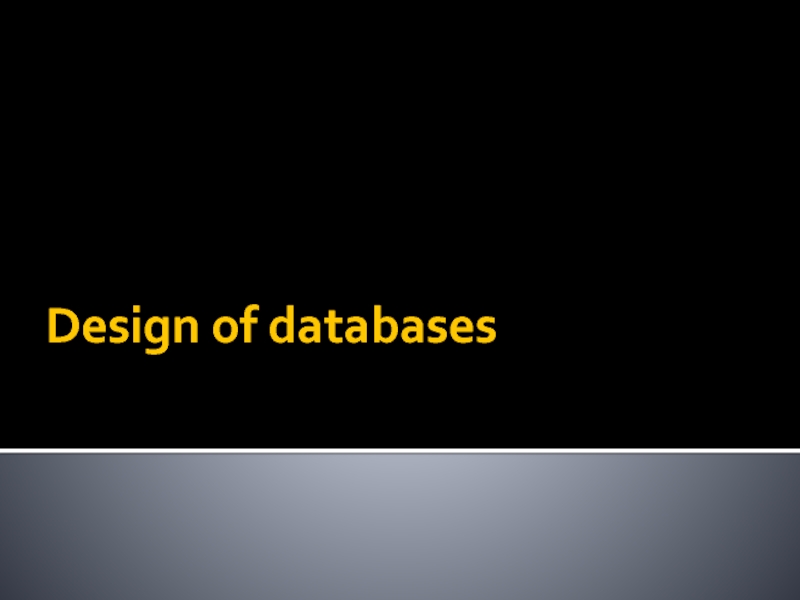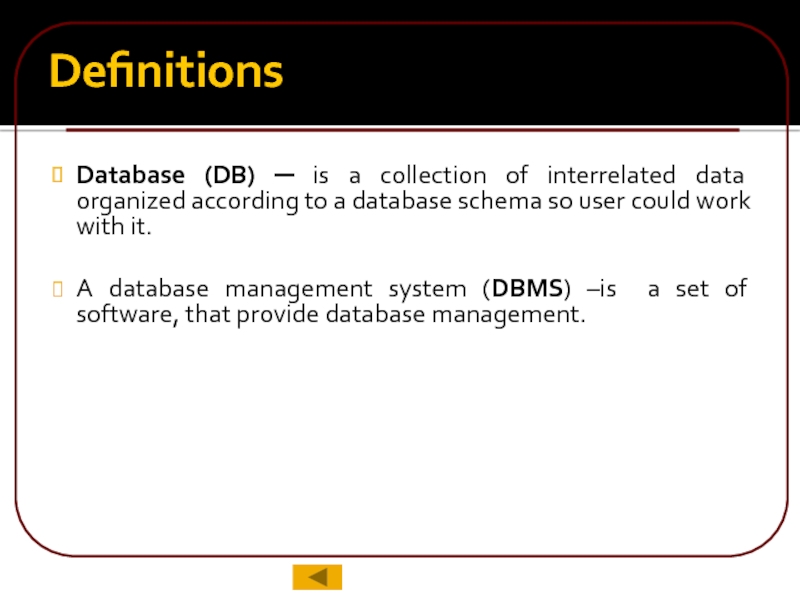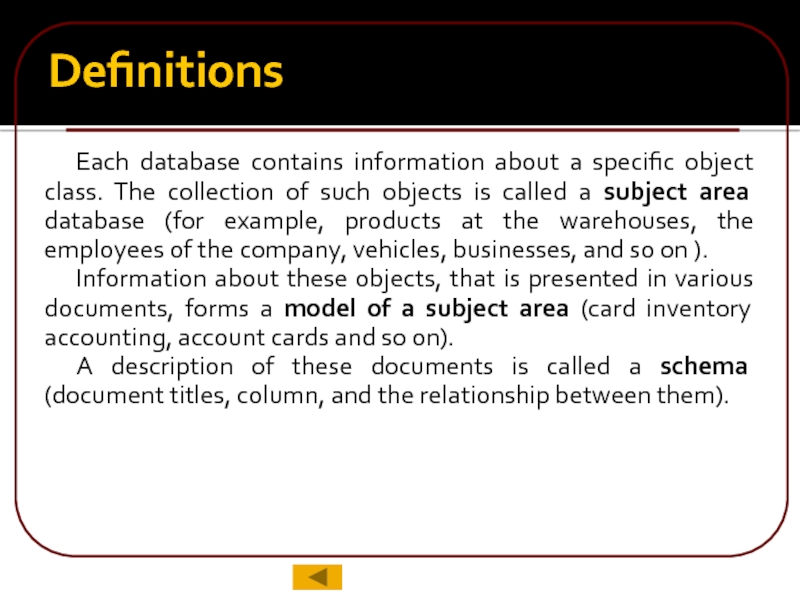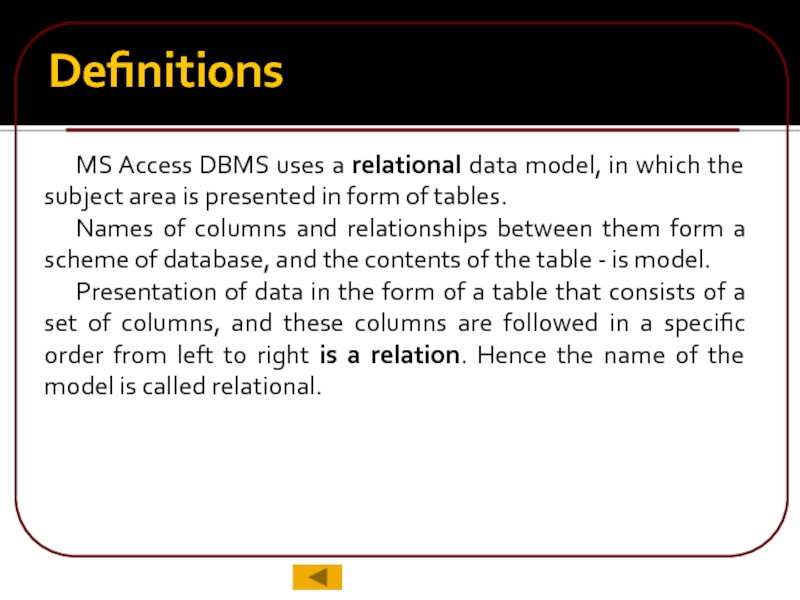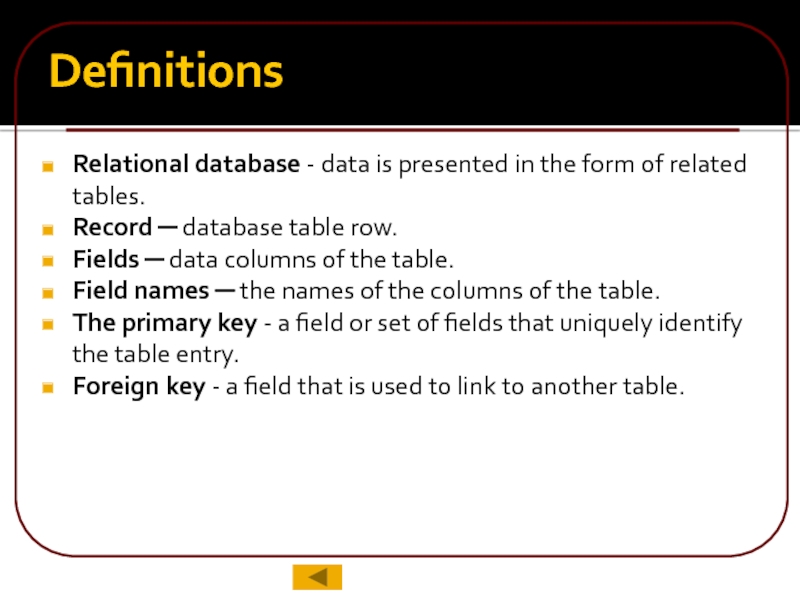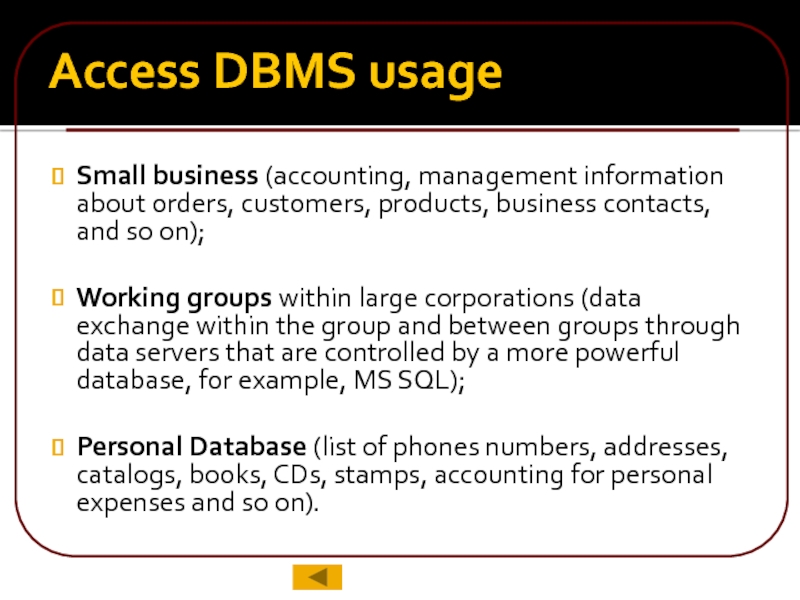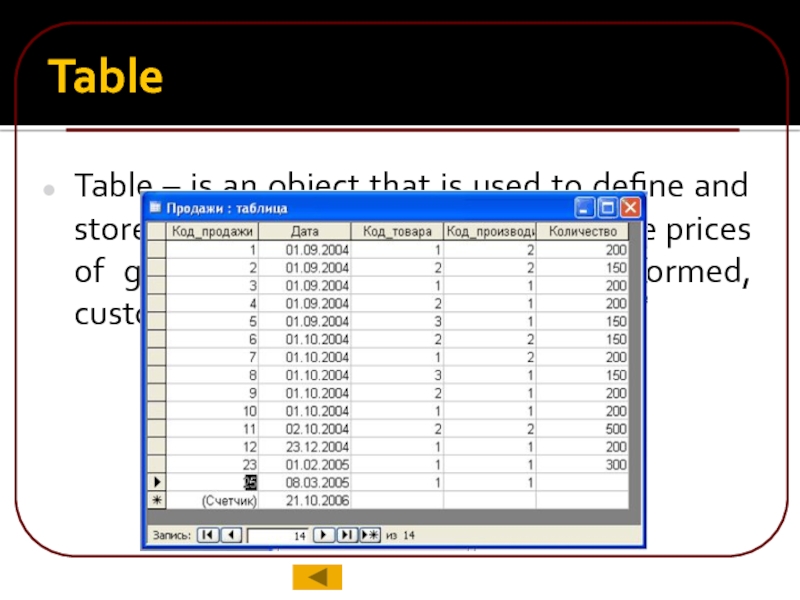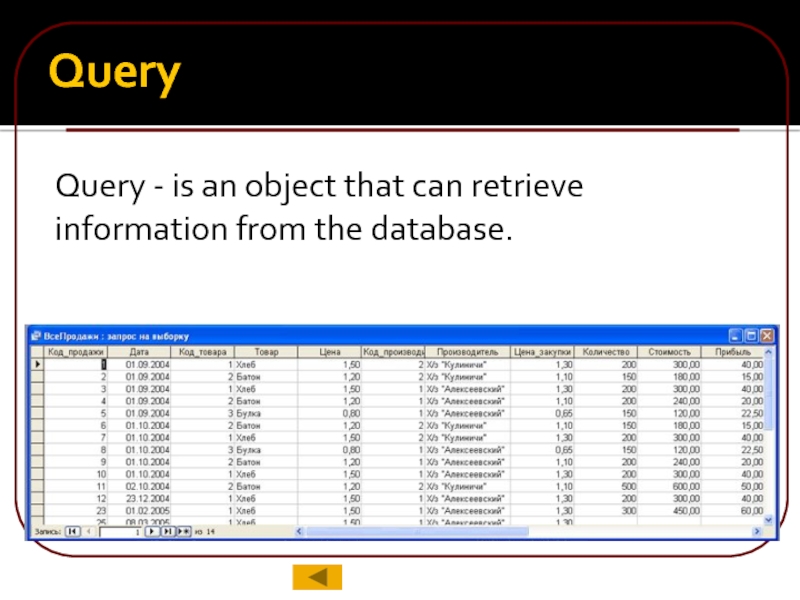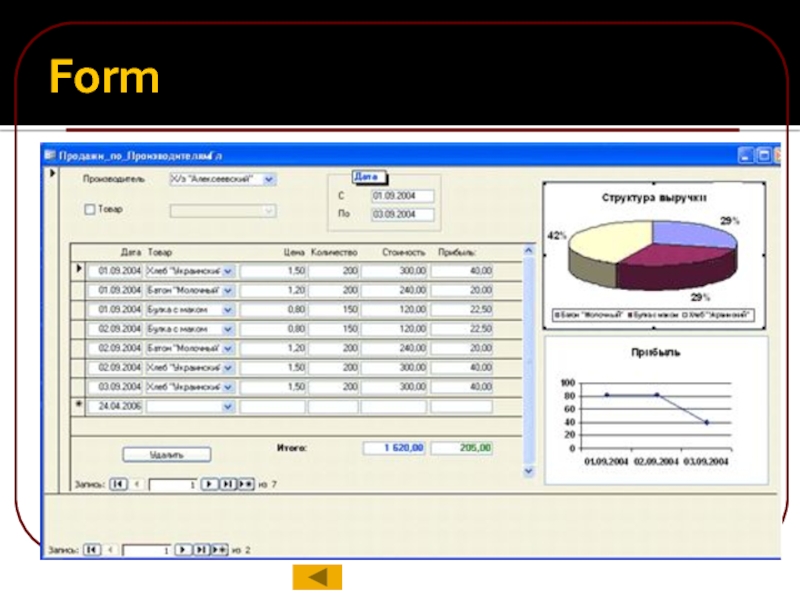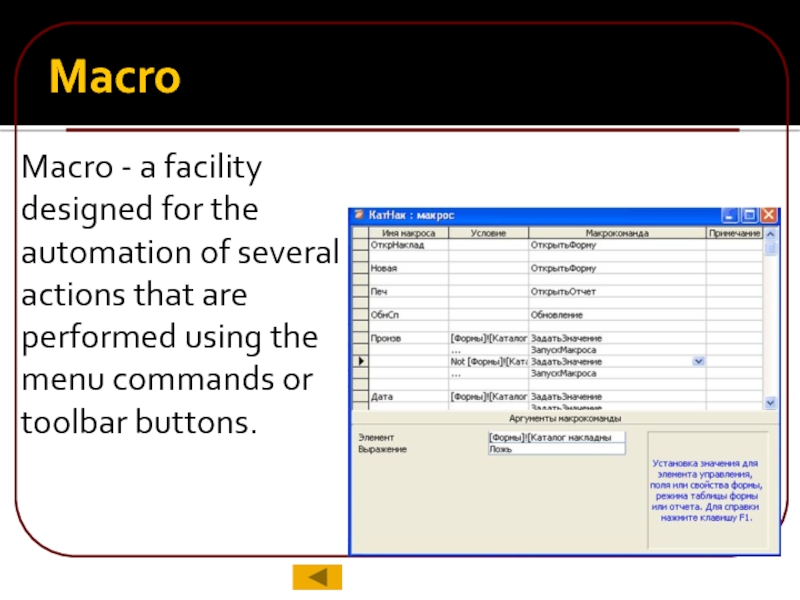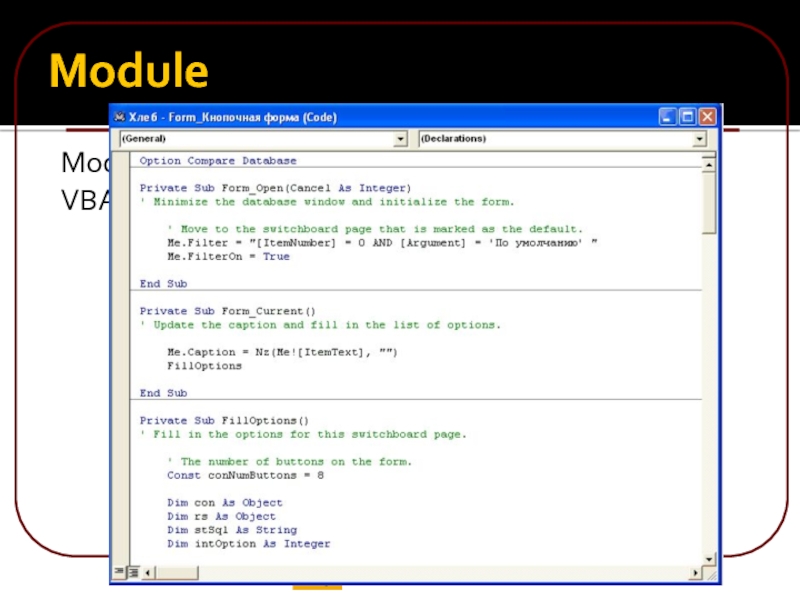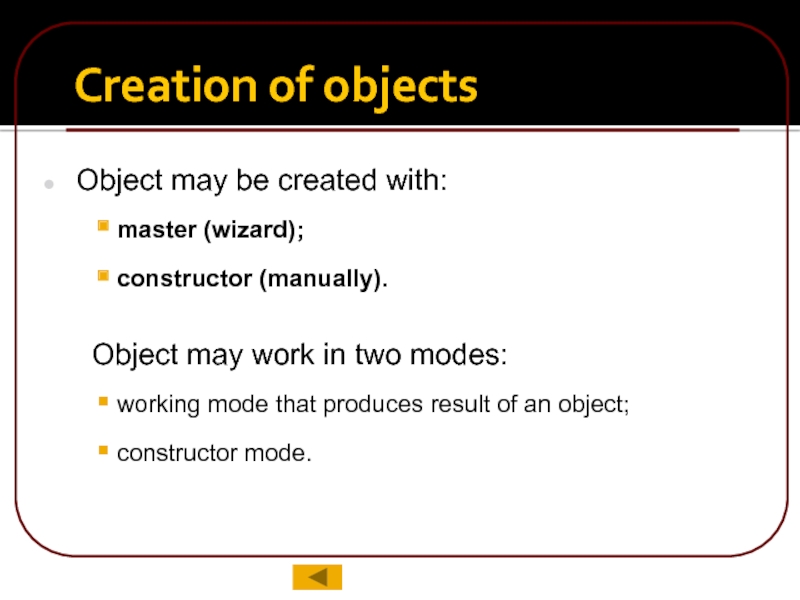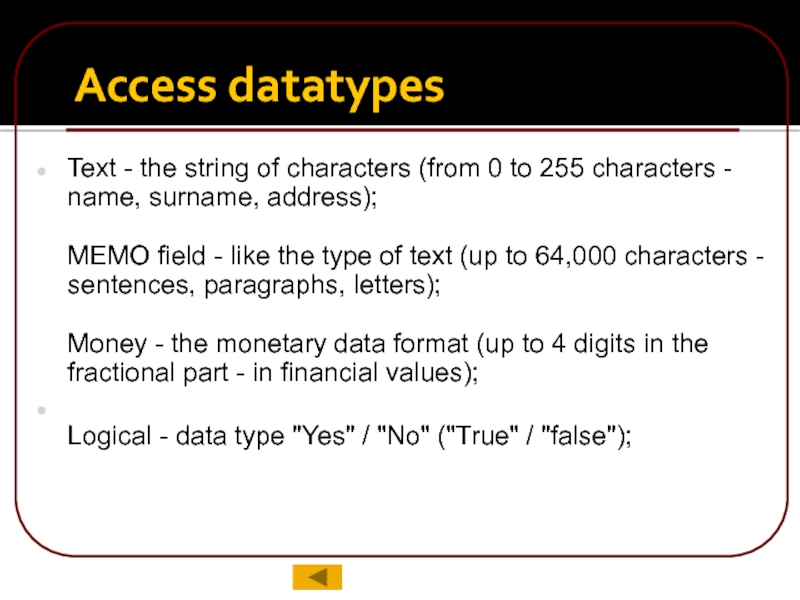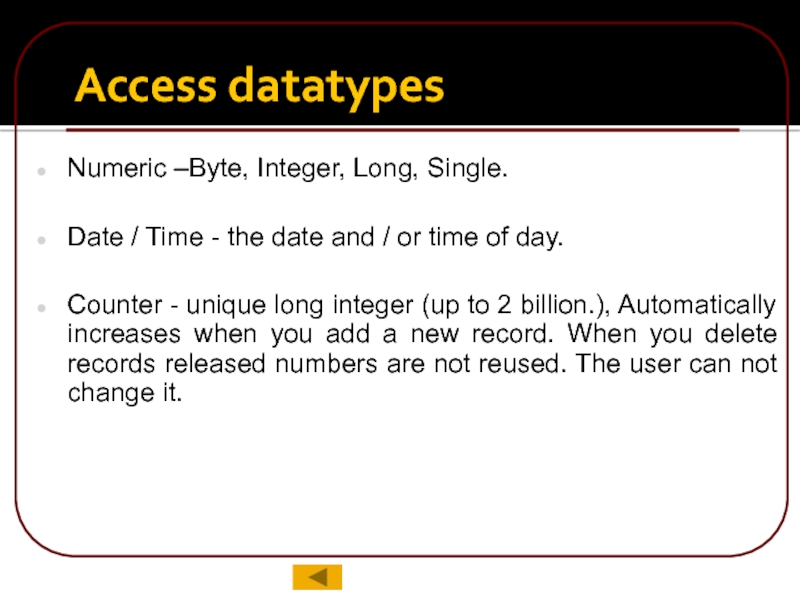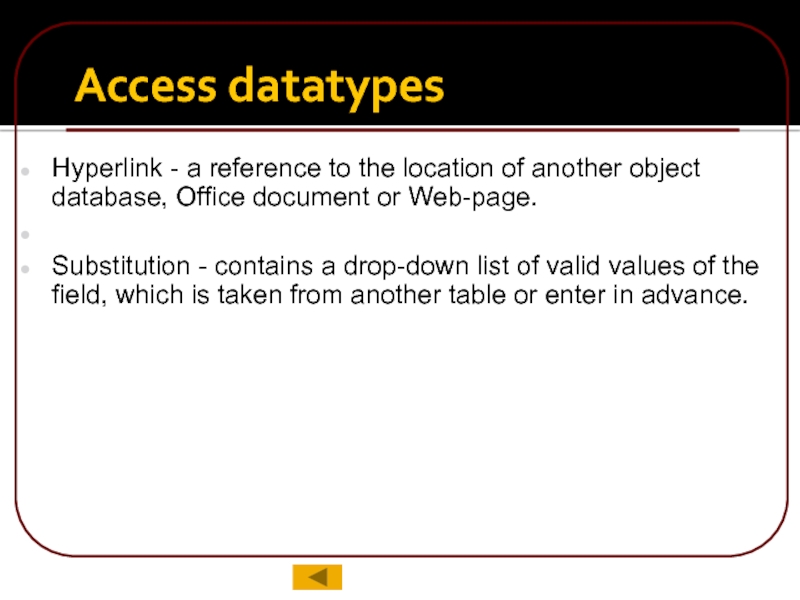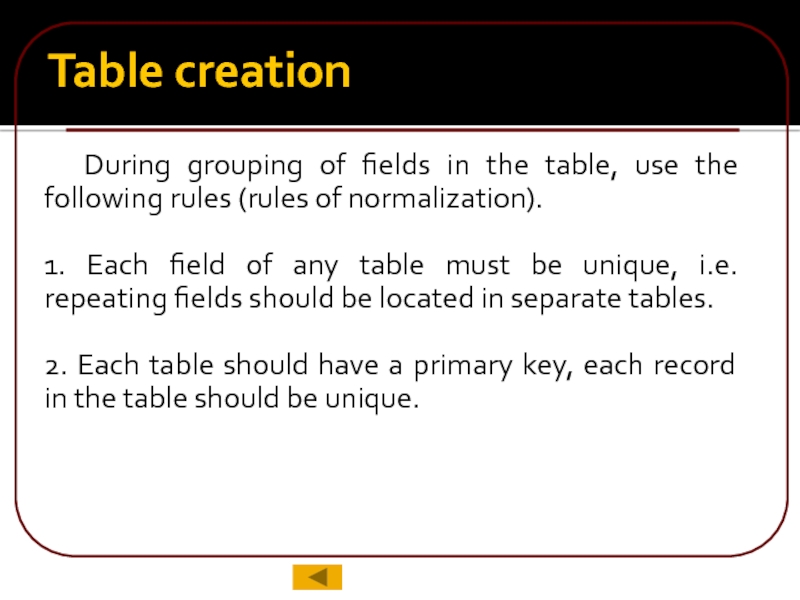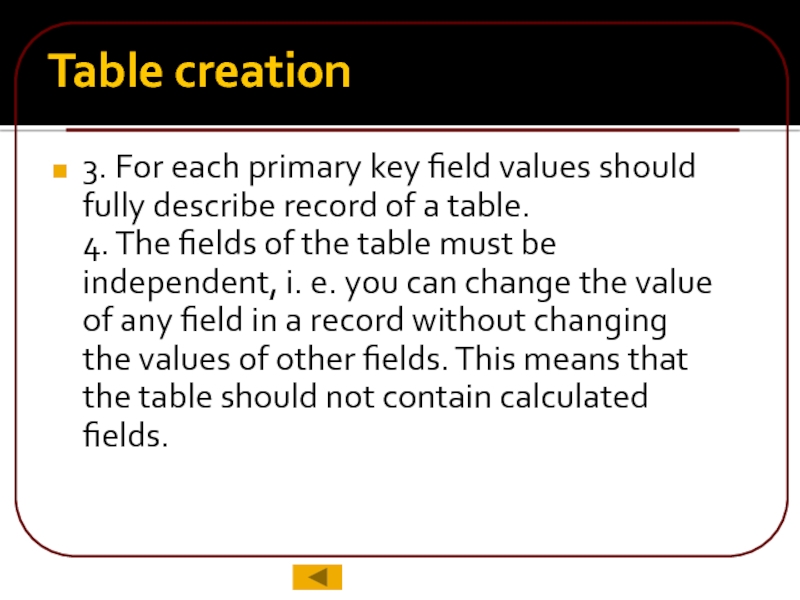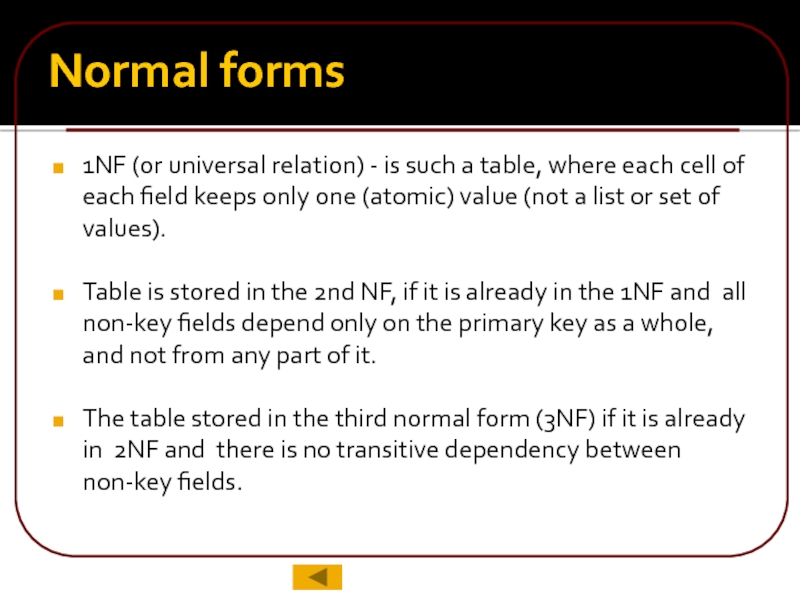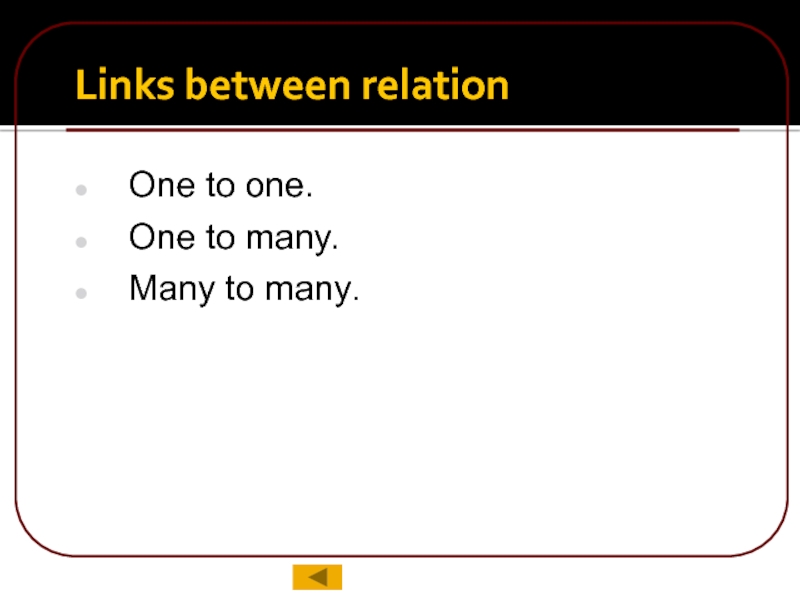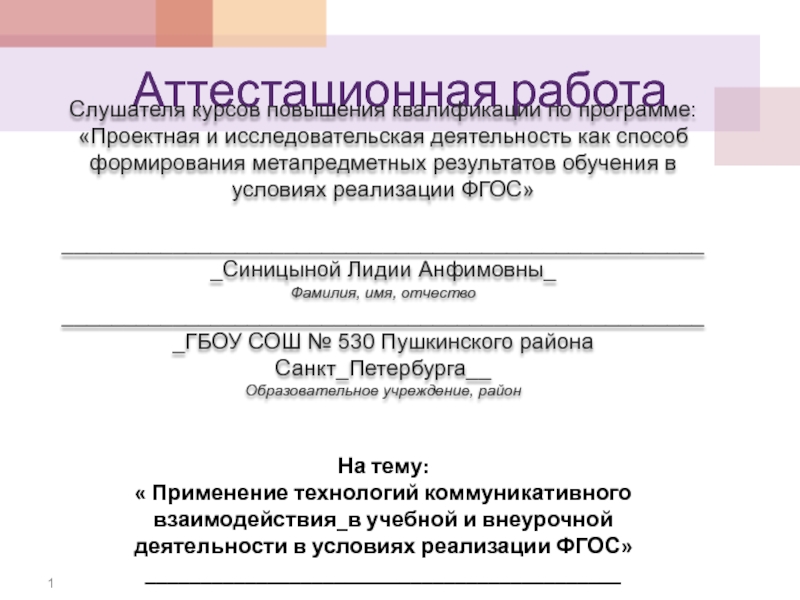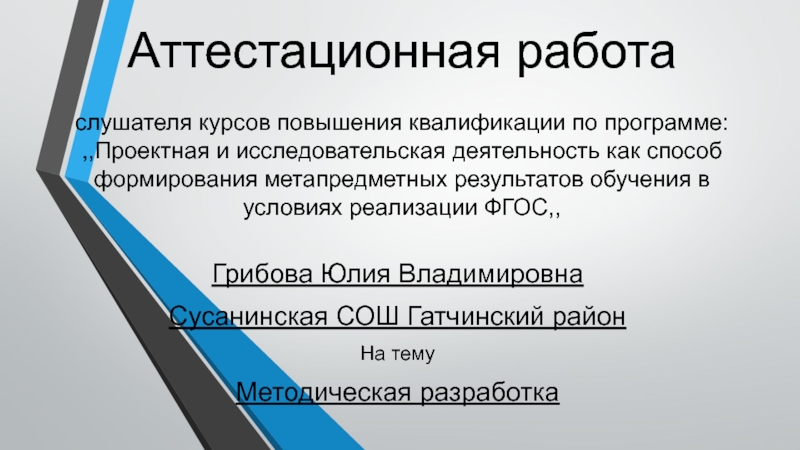- Главная
- Разное
- Дизайн
- Бизнес и предпринимательство
- Аналитика
- Образование
- Развлечения
- Красота и здоровье
- Финансы
- Государство
- Путешествия
- Спорт
- Недвижимость
- Армия
- Графика
- Культурология
- Еда и кулинария
- Лингвистика
- Английский язык
- Астрономия
- Алгебра
- Биология
- География
- Детские презентации
- Информатика
- История
- Литература
- Маркетинг
- Математика
- Медицина
- Менеджмент
- Музыка
- МХК
- Немецкий язык
- ОБЖ
- Обществознание
- Окружающий мир
- Педагогика
- Русский язык
- Технология
- Физика
- Философия
- Химия
- Шаблоны, картинки для презентаций
- Экология
- Экономика
- Юриспруденция
Design of databases презентация
Содержание
- 1. Design of databases
- 2. Definitions Database (DB) ─ is a collection
- 3. Definitions Each database contains information about a
- 4. Definitions MS Access DBMS uses a relational
- 5. Definitions Relational database - data is presented
- 6. Access DBMS usage Small business (accounting, management
- 7. Table Table – is an object that
- 8. Query Query - is an object that can retrieve information from the database.
- 9. Form Form - is an object
- 10. Report Report - is an object to
- 11. Macro Macro - a facility designed
- 12. Module Module - an object that represents
- 13. Object may be created with: master
- 14. Text - the string of characters (from
- 15. Numeric –Byte, Integer, Long, Single. Date
- 16. Hyperlink - a reference to the location
- 17. Database design steps Formulation of the main
- 18. Table creation During grouping of fields in
- 19. Table creation 3. For each primary key
- 20. Normal forms Database can consist of several
- 21. Normal forms 1NF (or universal relation) -
- 22. One to one. One to many. Many to many. Links between relation
Слайд 2Definitions
Database (DB) ─ is a collection of interrelated data organized according
A database management system (DBMS) –is a set of software, that provide database management.
Слайд 3Definitions
Each database contains information about a specific object class. The collection
Information about these objects, that is presented in various documents, forms a model of a subject area (card inventory accounting, account cards and so on).
A description of these documents is called a schema (document titles, column, and the relationship between them).
Слайд 4Definitions
MS Access DBMS uses a relational data model, in which the
Names of columns and relationships between them form a scheme of database, and the contents of the table - is model.
Presentation of data in the form of a table that consists of a set of columns, and these columns are followed in a specific order from left to right is a relation. Hence the name of the model is called relational.
Слайд 5Definitions
Relational database - data is presented in the form of related
Record ─ database table row.
Fields ─ data columns of the table.
Field names ─ the names of the columns of the table.
The primary key - a field or set of fields that uniquely identify the table entry.
Foreign key - a field that is used to link to another table.
Слайд 6Access DBMS usage
Small business (accounting, management information about orders, customers, products,
Working groups within large corporations (data exchange within the group and between groups through data servers that are controlled by a more powerful database, for example, MS SQL);
Personal Database (list of phones numbers, addresses, catalogs, books, CDs, stamps, accounting for personal expenses and so on).
Слайд 7Table
Table – is an object that is used to define and
Слайд 9
Form
Form - is an object that creates a user-friendly interface to
Слайд 10Report
Report - is an object to create printer-friendly output of the
Слайд 11
Macro
Macro - a facility designed for the automation of several actions
Слайд 12Module
Module - an object that represents a program in VBA, and
Слайд 13
Object may be created with:
master (wizard);
constructor (manually).
Object may work in
working mode that produces result of an object;
constructor mode.
Creation of objects
Слайд 14Text - the string of characters (from 0 to 255 characters
Logical - data type "Yes" / "No" ("True" / "false");
Access datatypes
Слайд 15Numeric –Byte, Integer, Long, Single.
Date / Time - the date and
Counter - unique long integer (up to 2 billion.), Automatically increases when you add a new record. When you delete records released numbers are not reused. The user can not change it.
Access datatypes
Слайд 16Hyperlink - a reference to the location of another object database,
Substitution - contains a drop-down list of valid values of the field, which is taken from another table or enter in advance.
Access datatypes
Слайд 17Database design steps
Formulation of the main problems that must be solved
Drawing up a list of fields, including their type.
The distribution of tables and fields for primary and foreign keys.
Establishing links between tables.
Filling the tables with data.
Слайд 18Table creation
During grouping of fields in the table, use the following
1. Each field of any table must be unique, i.e. repeating fields should be located in separate tables.
2. Each table should have a primary key, each record in the table should be unique.
Слайд 19Table creation
3. For each primary key field values should fully describe
Слайд 20Normal forms
Database can consist of several tables, each of which must
In relational theory six normal forms exist, but in practice it is enough that each table corresponds to the first three normal forms: 1NF, 2NF and 3NF.
The need to bring the table to normal forms is determined to achieve a data organization in which each fact is stored in one place and will not be repeated!
Слайд 21Normal forms
1NF (or universal relation) - is such a table, where
Table is stored in the 2nd NF, if it is already in the 1NF and all non-key fields depend only on the primary key as a whole, and not from any part of it.
The table stored in the third normal form (3NF) if it is already in 2NF and there is no transitive dependency between non-key fields.
